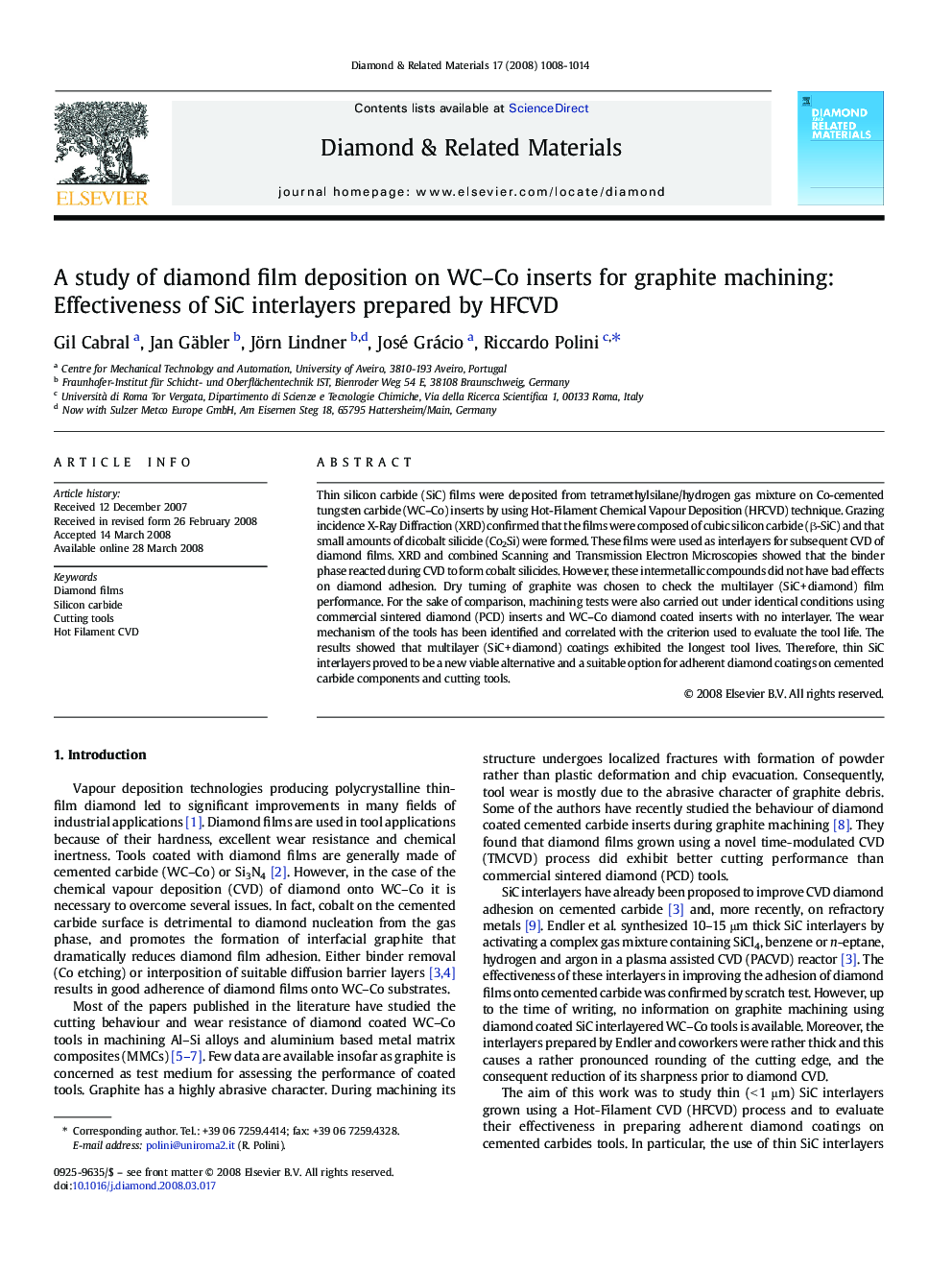| Article ID | Journal | Published Year | Pages | File Type |
|---|---|---|---|---|
| 701111 | Diamond and Related Materials | 2008 | 7 Pages |
Thin silicon carbide (SiC) films were deposited from tetramethylsilane/hydrogen gas mixture on Co-cemented tungsten carbide (WC–Co) inserts by using Hot-Filament Chemical Vapour Deposition (HFCVD) technique. Grazing incidence X-Ray Diffraction (XRD) confirmed that the films were composed of cubic silicon carbide (β-SiC) and that small amounts of dicobalt silicide (Co2Si) were formed. These films were used as interlayers for subsequent CVD of diamond films. XRD and combined Scanning and Transmission Electron Microscopies showed that the binder phase reacted during CVD to form cobalt silicides. However, these intermetallic compounds did not have bad effects on diamond adhesion. Dry turning of graphite was chosen to check the multilayer (SiC + diamond) film performance. For the sake of comparison, machining tests were also carried out under identical conditions using commercial sintered diamond (PCD) inserts and WC–Co diamond coated inserts with no interlayer. The wear mechanism of the tools has been identified and correlated with the criterion used to evaluate the tool life. The results showed that multilayer (SiC + diamond) coatings exhibited the longest tool lives. Therefore, thin SiC interlayers proved to be a new viable alternative and a suitable option for adherent diamond coatings on cemented carbide components and cutting tools.
